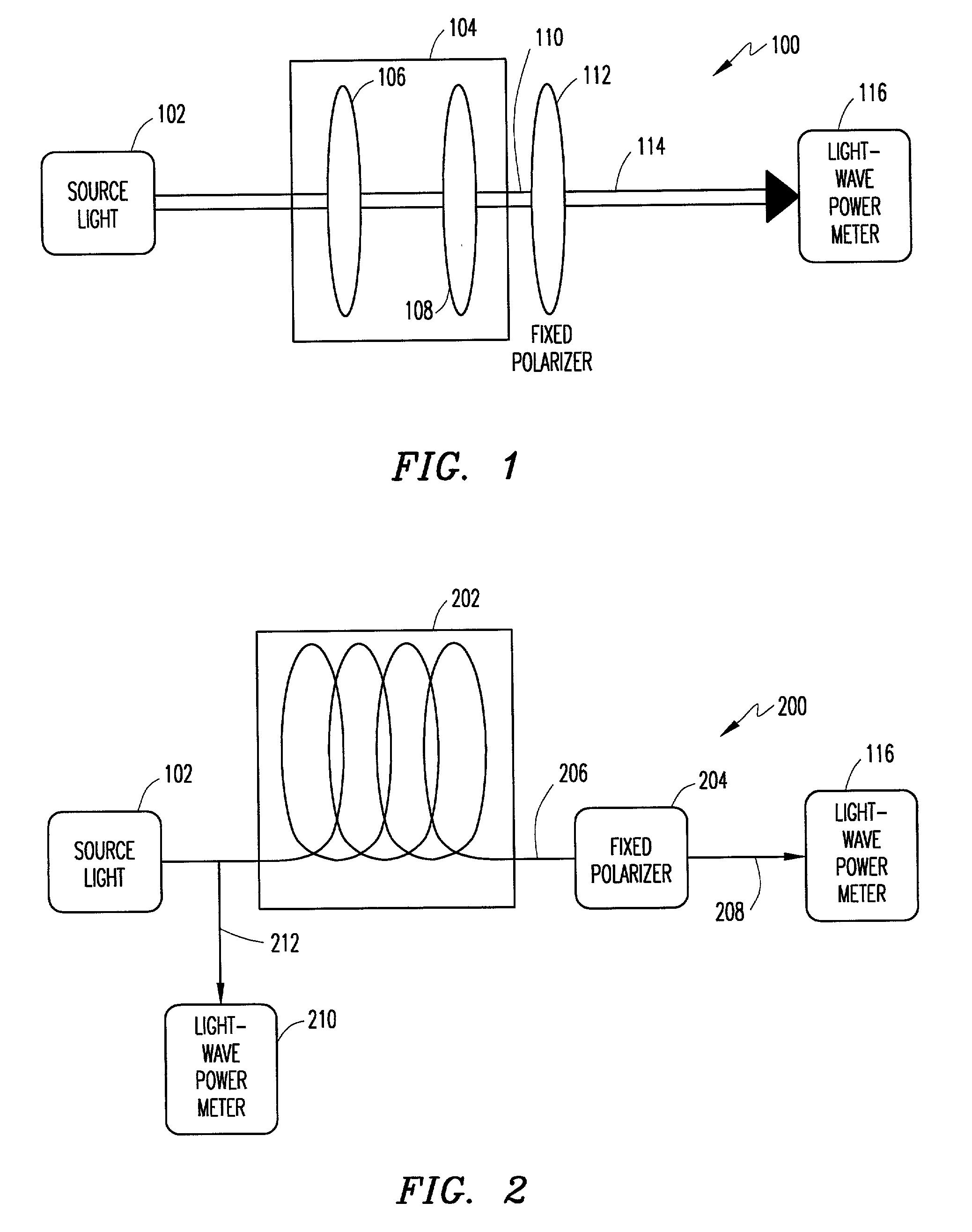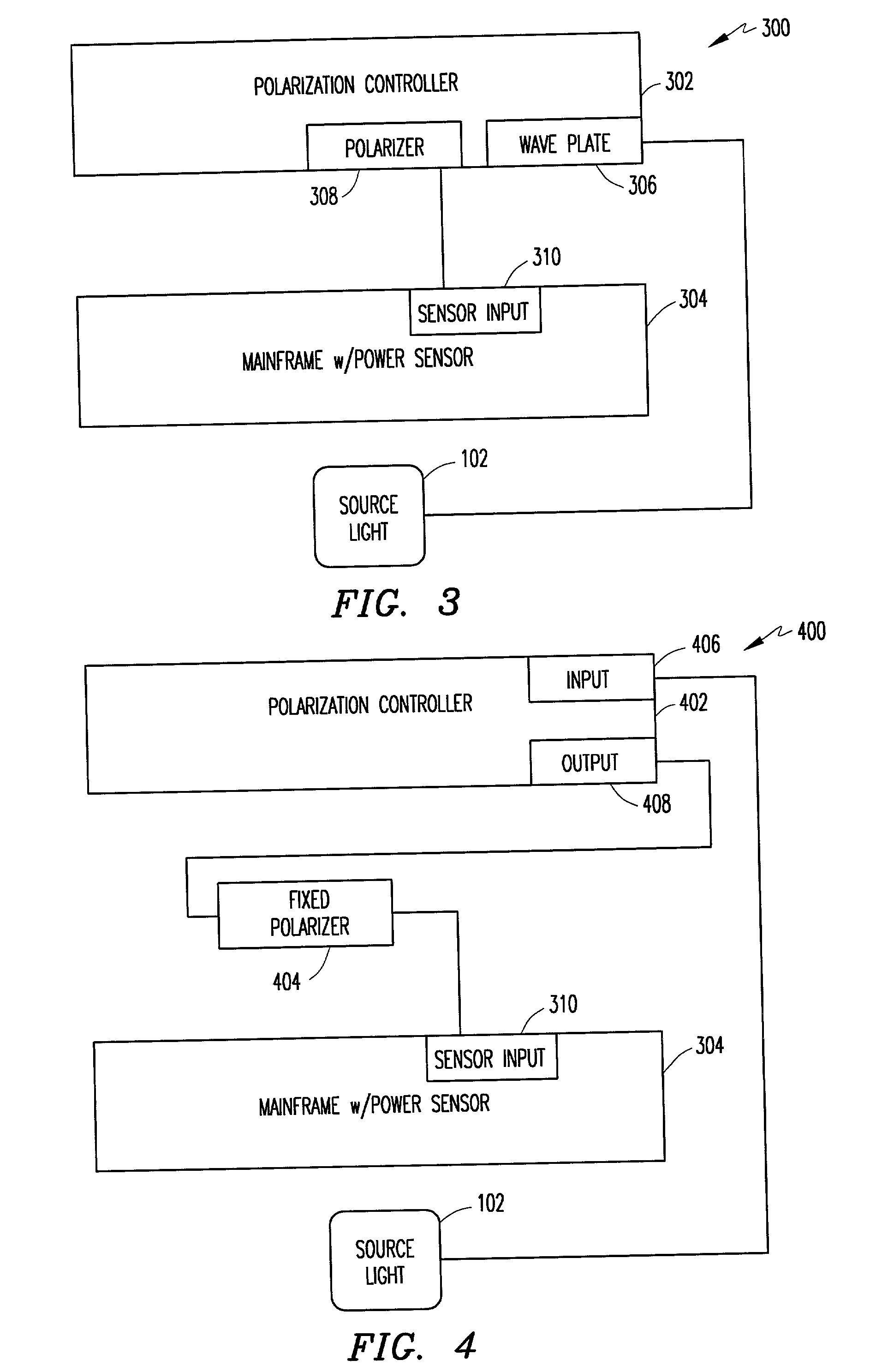Method and system for determining the degree of polarization of light
a technology of polarization and measurement method, applied in the direction of optical radiation measurement, photoelectric discharge tube, instruments, etc., can solve the problems of measurement uncertainty, measurement technique described above, and insatiable results
- Summary
- Abstract
- Description
- Claims
- Application Information
AI Technical Summary
Problems solved by technology
Method used
Image
Examples
Embodiment Construction
[0033] Any polarization state of linearly-polarized light can be transformed to any other state of linear polarization by transmitting the light through a rotatable half-wave plate Mhwp(a) such that:
S.sub.lpol=M.sub.hwp(.alpha.).multidot.S.sub.in (11)
[0034] A light wave emerging from the half-wave plate (S.sub.lpol) can then be passed through a fixed linear polarizer represented by M.sub.lpol and the transmitted intensity of the light output by the fixed linear polarizer (S.sub.out) measured with a light-wave power meter, such that:
S.sub.out=M.sub.lpol.multidot.S.sub.lpol (12)
S.sub.out=M.sub.lopl.multidot.M.sub.hwp(.alpha.).multidot.S.sub.in (13)
[0035] As the half-wave plate is rotated by .alpha., a minimal and a maximal transmitted intensity of the light output by the fixed linear polarizer can be measured using the light-wave power meter and the DOP determined from the measurements. With this technique for measuring the DOP, the light-wave power meter is subjected to only a single...
PUM
 Login to View More
Login to View More Abstract
Description
Claims
Application Information
 Login to View More
Login to View More - R&D
- Intellectual Property
- Life Sciences
- Materials
- Tech Scout
- Unparalleled Data Quality
- Higher Quality Content
- 60% Fewer Hallucinations
Browse by: Latest US Patents, China's latest patents, Technical Efficacy Thesaurus, Application Domain, Technology Topic, Popular Technical Reports.
© 2025 PatSnap. All rights reserved.Legal|Privacy policy|Modern Slavery Act Transparency Statement|Sitemap|About US| Contact US: help@patsnap.com



